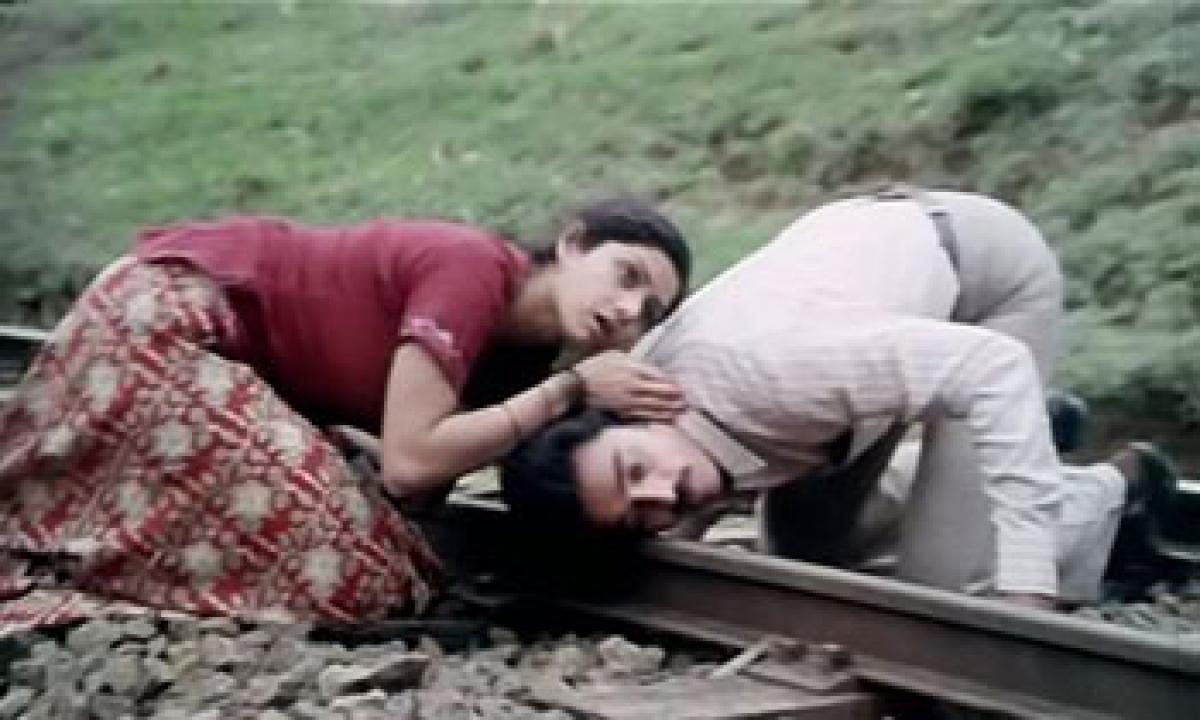Live
- Sensex, Nifty drift lower on profit booking
- Jagan treated cadres as ‘subordinates’, alleges Grandhi
- Mpower’s survey on edu loans
- IIP growth falls to 3.5% in Oct
- Easing food prices lower retail inflation to 5.48% in November
- Space allocation for packaging units at MSME parks on anvil
- Maha Kumbh: Yogi reviews preparations
- Gadkari on accidents: I try to hide my face in meetings abroad
- Abetment of suicide: Mere harassment not sufficient to find accused guilty says SC
- 6.79L homes to receive water under Amrut-II
Just In

As a concept, the visual depiction of love between two characters through a song is a very popular one in Indian cinema. It not only saves the running time of a film but also lends a good pace to the narrative as it unspools on its way till the end.
 As a concept, the visual depiction of love between two characters through a song is a very popular one in Indian cinema. It not only saves the running time of a film but also lends a good pace to the narrative as it unspools on its way till the end.
As a concept, the visual depiction of love between two characters through a song is a very popular one in Indian cinema. It not only saves the running time of a film but also lends a good pace to the narrative as it unspools on its way till the end.
Balu Mahendra, one of India’s finest cinematographers-cum-directors, mesmerises the viewer with his films, a delectable combination of great visuals and music. In the ‘80s, it was more the case with his successful association with Ilaiyarajaa, who matched the arresting scenes onscreen with his captivating tunes and background score.
In ‘Sadma’, the remake of the Tamil hit ‘Moondram Pirai’ (dubbed as ‘Vasantha Kokila’ in Telugu) released a year earlier, this song “ae zindagi gale laga le” has a very interesting history. While Rajaa faithfully reproduced his southern tunes in Hindi, except this song which he recomposed, he tweaked the original slightly. The composition thus attained a different level, with a voice variation from K J Yesudas to the talented Suresh Wadkar, who counts this number as one of his favourites even till date. The other highlights of the Tamil original were that it went on to fetch two National Awards for the hero, Kamal Hassan as the Best Actor and Mahendra, as the Best Cinematographer.
The canny music maestro, for his part, used the same tune sung by Wadkar for a Rajinikanth starrer in Tamil released in 1984, which completed the journey. It surely ranks as one of the unusual exploitations of a composer, re-cycling his own songs at various levels, and accepted well by his fans.
The Hindi remake retains the aesthetic brilliance and love with which the film has been shot. Right from the first shot, the arresting impact of the song as the hero and heroine establish their identities- a mentally-challenged heroine and a patient, loving hero- is clear.
With a foggy, misty ambience, the camera has a field day, capturing the hill station Ooty and its surroundings, as the narrative establishes the struggle of the hero Kamal Hassan to control the hyper profile of the heroine, who is a tad less natural than what she was in the Tamil version. The story that unfolds is a caring youngster who knows the child-woman has to be handled as both, which he does flawlessly, with the female part too providing efficient support.
.jpg) Just savour the ace lyricist’s lines, for example, which Wadkar renders sonorously: “chhota sa saaya tha, aankhon mein aaya tha, hamne do bhoondo se mann bhar liya”… Rajaa’s orchestration lifts the song effortlessly, the genius knowing that he has to fit in the right scale and lilt to provide the maximum chances to his classically-trained singer.
Just savour the ace lyricist’s lines, for example, which Wadkar renders sonorously: “chhota sa saaya tha, aankhon mein aaya tha, hamne do bhoondo se mann bhar liya”… Rajaa’s orchestration lifts the song effortlessly, the genius knowing that he has to fit in the right scale and lilt to provide the maximum chances to his classically-trained singer.
The visuals, where the heroine frolicks sitting on a donkey with an exasperated hero, desperate to make her behave continues with her piggybacking on him, with childish glee. The one which she places her ear on the railway track, face upon face with the hero, trying to gauge from which direction the train is about to come scooting in is a long-etched memory of Kamal-Sridevi fans who have often voted for them as one of the recent best romantic pairs of Indian cinema. The subtle competition to match expression for expression, a standard feature of their being seen together, reflects in this song too. A histrionic, cinematographic ultimate experience, it becomes thus….
By:K Naresh Kumar

© 2024 Hyderabad Media House Limited/The Hans India. All rights reserved. Powered by hocalwire.com







